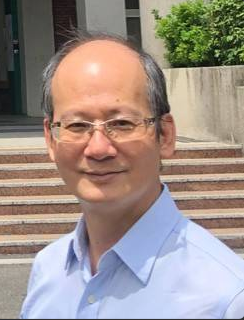
Distinguished Prof. Chih-Huang Weng
Chairman of the Department of Civil Engineering at I-Shou UniversitySpeech Title: Optimized biochars derived from agriculture wastes for adsorptive Cu(II) removal
Abstract: Copper (Cu) is a metal that adversely impacts organisms and humans at elevated concentrations. In Taiwan, Cu is the primary metal in contaminated agricultural land and irrigation canal sediments. Most Cu ions originate from industrial wastewater that needs to be properly treated before discharging into receiving water body. If proper adsorbent is selected in conjunction with optimized operating parameters, adsorption can effectively separate Cu(II) from the aqueous solution among the various wastewater treatment techniques. Biochar is a viable adsorbent for contaminant removal compared to activated carbon, owing to the abundant surface functional groups, high specific surface area, and available exchangeable cations on the surface. Agricultural wastes are rich in cellulose, making them ideal biomass for biochar fabrication. Utilizing agricultural wastes to produce biochar is a mutually beneficial solution that removes contaminants while reducing on-site air pollution caused by burning residue waste. For the first time, a systematic investigation of critical pyrolysis parameters of biochar derived from corn waste biochar (CWB), pineapple leaf biochar (PLB), and sugarcane bagasse biochar (SBB) on Cu(II) adsorption was studied. The result showed that heating temperature was the most relevant parameter influencing Cu(II) adsorption based on the response surface methodology (RSM) findings. From Langmuir isotherm fitting, optimized biochar achieved maximum Cu(II) adsorption capacity of 60.7, 36.8, and 35.5 mg g-1 by PLB, SBB, and CWB at pyrolysis temperature of 555℃, 559℃, 507℃, respectively, compared with commercial activated carbon (CAC, 40.8 mg g-1). Surface characterizations of optimized biochars confirmed that the Cu(II) removal mechanism was attributed to the surface complexation formed with surface functional groups, electrostatic interaction, and cation exchange capacity. The presence of humic acid reduced the Cu(II) removal of both CAC and optimized biochars. OPLB remained highly reusable with 87% Cu(II) removal efficiency after five consecutive regeneration cycles with the pressure cooker technique. With ultrahigh Cu(II) adsorption capacity and excellent reusability, agricultural-waste-derived biochars show high applicability potential for treating Cu(II)-laden industrial effluents. This work also provides a framework for better understanding how Cu(II) ions react with biochar.
Biography: Distinguished Professor Chih-Huang Weng is the Chairman of the Department of Civil Engineering at I-Shou University, Taiwan. He also served as Vice-President of North Kaohsiung Community University, Taiwan. Prof. Weng received his MS and Ph.D. degrees in 1990 and 1994, respectively, from the Department of Civil Engineering of The University of Delaware, USA. He is serving as the Editor of Water (MDPI) and Editor of Environmental Geochemistry and Health (Springer), and on the Editorial Board Panel Member of Coloration Technology (Wiley). He has also served as a Guest Editor of SCI journals, such as Agricultural Water Management (Elsevier) and Environmental ScPrience and Pollution Research (Springer). He has also organized and chaired several international conferences. Professor Weng was listed in the World’s Top 2% of Scientists (Stanford University, 2021 and 2022). His main research interests focus on using advanced oxidation processes and adsorption to treat wastewater and bacteria inactivation, groundwater modeling, and application of electrokinetic technologies to soil remediation/sludge treatment/activated carbon regeneration.
